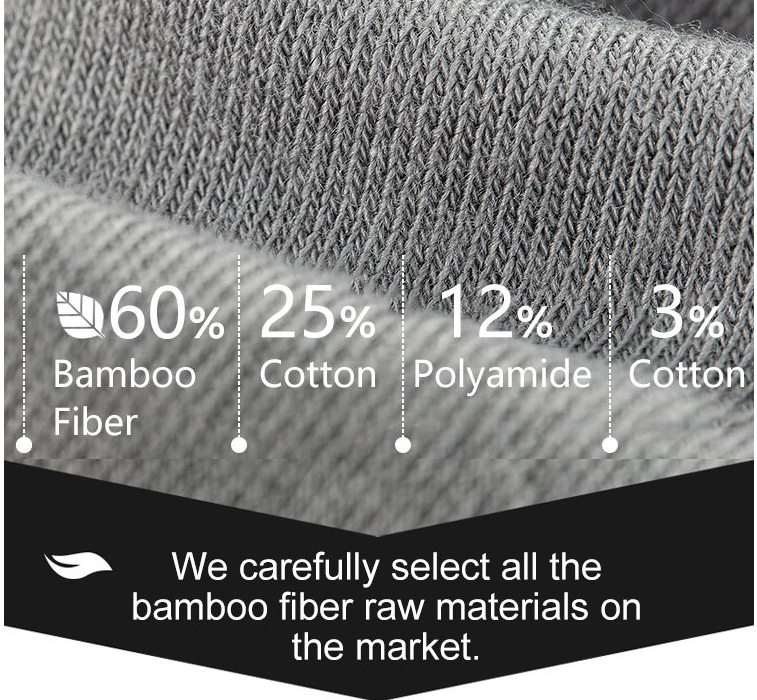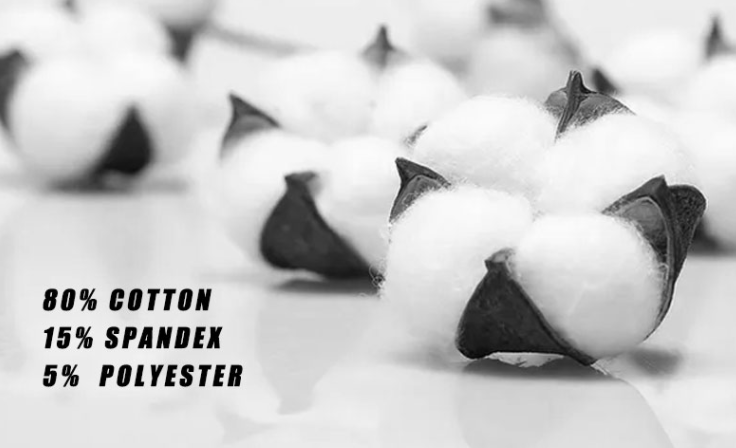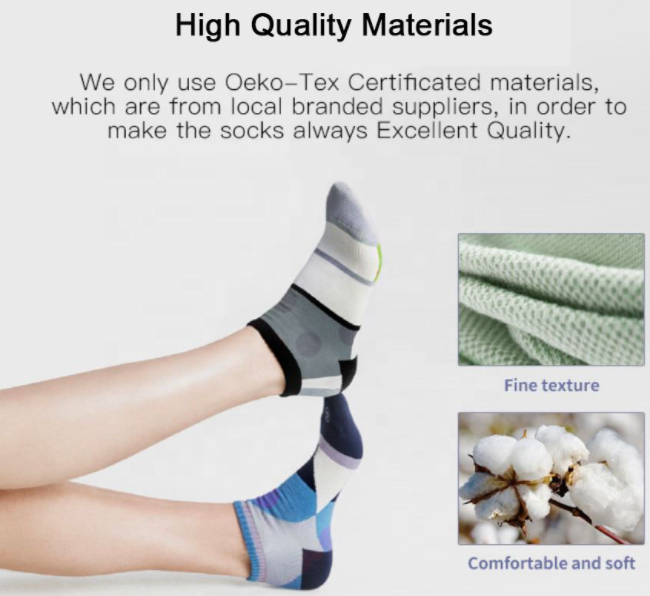What are the materials of the socks?
1, cotton
Usually, socks with a cotton content of more than 75% can become pure cotton socks. Generally, socks with a cotton content of 85% are very high-end cotton socks. In addition to adding cotton, cotton socks also need to add some functional fibers to maintain the elasticity, fastness and comfort of the socks. Spandex, nylon, acrylic, polyester, etc. are all very common functional fibers.
2.Combed cotton
It uses a machine called a comber to remove the long and neat cotton fibers left after the shorter fibers in the ordinary fibers. Due to the removal of short cotton fibers and other fiber impurities, the cotton yarn spun from combed cotton is more delicate and the finished product feels smoother and more comfortable. It belongs to the middle and high-end cotton products.
3. Mercerized cotton
Mercerized cotton refers to cotton fibers that are processed by mercerizing in a concentrated alkali solution. This kind of cotton fiber has better gloss than ordinary cotton fiber under the premise that other physical indicators and properties remain unchanged, and it is more shiny and less prone to wrinkling. Mercerized cotton can often be seen in thin summer socks.
4. Spandex
Spandex is commonly known as elastic fiber, which has high elasticity and strong stretchability, and its stretched length can reach 5-7 times of the original fiber. Textile products with spandex can maintain the original contour. If the composition of the socks contains spandex, it can make the socks have elasticity and shrinkage, and make it easier to wear, so that the socks can be more close to the foot, like a swimsuit, it can be tightly wrapped in the footsteps, and will not slip off.
5. Lycra
In layman’s terms, Lycra is spandex. The difference between Lycra and traditional elastic fibers is that it can stretch up to 500% and can be restored to its original shape. In other words, this kind of fiber can be stretched very easily, but it can be close to the surface of the human body after recovery, and the restraining force on the human body is very small. Lycra fiber can be used with any fabric, including wool, hemp, silk and cotton, to increase the close-fitting, elasticity, and loose nature of the fabric, making it more flexible when moving. Moreover, Lycra is different from most spandex yarns. It has a special chemical structure and will not grow mildew in a humid and heat sealed space after being wet.
6, nylon
Nylon is the name of a synthetic fiber with Chinese characteristics. People are more familiar with its other name, nylon. The scientific name of nylon is polyamide fiber. In China, it is the Jinzhou Chemical Fiber Factory that synthesizes this fiber. Because of the name of Jinzhou, it is named nylon. Nylon has the same properties as nylon. It is strong and wear-resistant. It is the most wear-resistant and strongest among synthetic fibers. And the weight is very light, the elasticity is good, adding nylon to the socks can maintain high-strength elasticity.
7, nylon
The emergence of nylon has given a new look to textiles. It is a major breakthrough in the synthetic fiber industry and an important milestone in polymer chemistry.
8. Polyester fiber/polyester
Compared with natural fibers, polyester has good elasticity and bulkiness, and the woven socks are lighter. However, polyester has low moisture content, poor air permeability, poor dyeability, easy pilling, and easy staining.
9. Bamboo fiber
The raw material of bamboo fiber comes from bamboo. As bamboo is regenerated much faster than wood, it has better environmental protection characteristics in this industrialized contemporary society. The bamboo fiber fabric also has the characteristics of soft and elegant, comfortable to the hand, and is not resistant to wear, moisture absorption, quick-drying and breathable. It is different from cotton, wood and other viscose fibers in that it has good antibacterial properties and health care effects. Bamboo fiber contains an antibacterial substance called “bamboo kun”, which has natural antibacterial, anti-mite, and deodorant drug properties. In addition, the ultraviolet light transmittance of bamboo fiber is 0.6%, which is 41.6 times that of cotton, which is very good. The raw material of anti-UV fabric.
10. Modal
This is also a very popular textile fiber in recent years, belonging to the viscose category. It is made by beating and spinning European beech. It is 100% natural, can be decomposed naturally, and is harmless to the environment and human body. The fabric processed and finished with modal fiber on cotton and polyester has silk-like luster, good drape, soft and smooth hand feeling. Modal is added to the ingredients of the socks, which can make the socks feel softer and more comfortable. It is also a very popular textile in recent years.
11, hemp
The hemp fiber is soft and strong, and the high-count and high-density hemp fabric is luster, abrasion resistance and good heat dissipation performance, so it is very suitable for summer wear. Hemp clothing is mostly, but socks are relatively rare.








